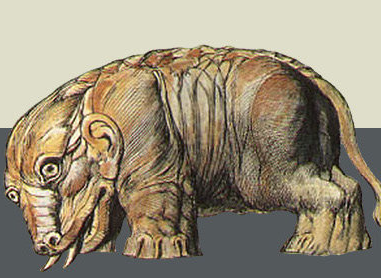Archive | Vol. 6/2013 | No. 1. Illegale Märkte, kriminelle Organisationen und politische Gewalt
Paul, Axel T. [Publishing editor]
Content
Editorial
Editorial / Paul, Axel T. [Autor:in] – 2013
Paul, Axel T.
Abstract:
Pages: 1-9
Scientific article
Searching for the determinants of OC: some preliminary reflections
Paoli, Letizia
Abstract:
Given the public concern about organized crime, it is important to identify the determinants of organized crime. Without a better understanding of these determinants, linking them to the different forms of organized crime, policy interventions risk selecting unrealistic goals or even obtaining counterproductive results. It is argued that criminal repression is a necessary reaction to the most serious forms of organized crime, such as a mafia-type organization challenging government authority. Nonetheless, governments should always aim at reducing the total harms associated with organized crime and not lose sight of the fact that they also carry responsibility for these harms.
Pages: 10-26
Scientific article
Bottom of the barrel : the US brewing industry and saloon culture before and during National Prohibition, 1900–1933
Welskopp, Thomas
Abstract:
Although the deep structural crisis of the American “Old-Time Saloon” and the beer brewing indus- try was self-inflicted, National Prohibition hit them hard in 1920. Whereas the saloon completely vanished from the scene, giving way to the more or less clandestine “speakeasy”, the brewing com- panies which did not go out of business altogether or did not resort to the production of legal surro- gates like “near beer”, strove desperately after strategies for survival. For lesser known breweries the alliance with organized crime allowed them to enter the illicit shadow economy. Larger corporations fiddled around until they discovered that they could produce the ingredient components of “real” beer and sell it wholesale to the bootleggers as long as their product was not yet fermented and con- tained no alcohol. In an absolutely legal way they thus provided the raw materials upon which the reconstruction of an (illegal) beer market could take place in the second half of the 1920
Pages: 27-54
Scientific article
From business to war : causes of transitional violence by the Mexican drug cartels
Schorr, Bettina
Abstract:
From business to war: Although illicit markets are generally peaceful, at times they burst into mas- sive transitional violence. One example for such an upsurge in violence is Mexico where the drug cartels are engaged in a bloody war. The Mexican case reveals that two interrelated factors can incite transitional illegal violence. First, market changes that close or open up business opportunities can lead to violent criminal competition. Second, political changes can cause or increase criminal vio- lence. When collusive state-crime relations erode and the state increases law enforcement against criminal groups, they are likely to fight back. Both factors are tightly connected: criminal competi- tion may erode protection rackets and incite harsher law enforcement. Law enforcement in turn may lead to the fragmentation of crime groups and cause more violent competition. Massive criminal violence is fed by further factors such as the easy availability of both weapons and specialists in violence and the displacement effect of intensive law enforcement in regions characterized by weak state structures.
Pages: 55-73
Scientific article
Mafias as organized third parties
Dorn, Christopher; Hoebel, Thomas
Abstract:
In the scientific debate on mafias we find neither a common usage nor a shared understanding as to what characterizes a mafia as opposed to other forms of organized crime. To clarify the mafia concept we suggest following Georg Simmel’s notion that the appearance of a third party substantively alters the constitution of a social configuration. It is our thesis that mafias act as the third party in a variety of settings by creating or sustaining social orders between at least two other involved parties. In order to acquire and maintain these third party positions, mafias assume the shape of formal organizations. In this light we show the usefulness of this approach through empirical cases that demonstrate how mafias operate as mediators, referees and gatekeepers. The concept “mafias as organized third parties” offers benefits to the study of mafias and organized crime as well as social theory more generally.
Pages: 74-97
Scientific article
Vigilantism as political violence : a typology
Schmidt-Lux, Thomas
Abstract:
Vigilantism is usually perceived as a form of political violence. But we can distinguish three types of vigilantism with respect to its relation to the state: a) vigilantism in place of the state, b) vigilantism as a better state, and c) vigilantism beyond the state. I shall show that the relation between vigilantes and the state is thus not always oppositional, and that the political dimension of vigilante actions in fact varies considerably.
Pages: 98-117
Review
[Rezension von: Joseph Vogl, Das Gespenst des Kapitals] / Feustel, Robert [Autor:in] – 2013
Feustel, Robert
Abstract:
Pages: 118-129
Review
[Rezension von: Silja Klepp, Europa zwischen Grenzkontrolle und Flüchtlingsschutz] / Hilpert, Isabel [Autor:in] – 2013
Hilpert, Isabel
Abstract:
Pages: 121-129
